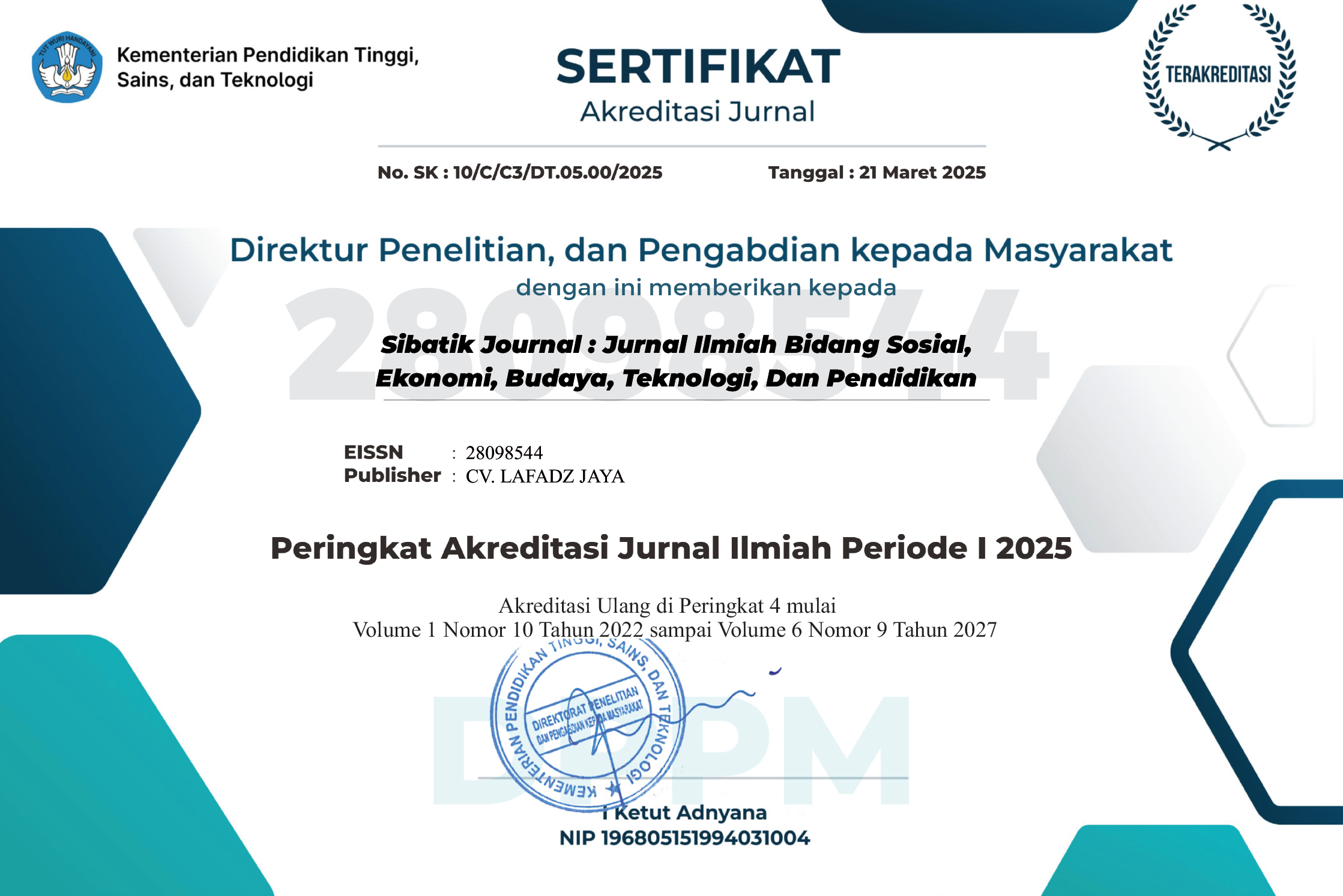PASAR RAKYAT SEBAGAI JEMBATAN REKONSILIASI: MEMBANGUN HUBUNGAN MASYARAKAT ANTARA WARGA EKS TIMOR-TIMUR DAN WARGA TIMOR -LESTE
DOI:
10.54443/sibatik.v4i8.3039Published:
2025-06-27Downloads
Abstract
This study aims to see how the people's market of the Motaain PLBN acts as a social space that supports post-conflict reconciliation between Indonesian and Timor Leste citizens. Using a qualitative approach and Pierre Bourdieu's theory of social practice, this study analyzes four main aspects: habitus, capital, arena, and social practice. The findings show that the market is not only an economic space, but also a place where new, more open, and harmonious social relations are built. Buying and selling activities in the market bring together citizens of the two countries regularly, strengthen existing social and cultural capital, and create social practices that support a peaceful and sustainable life together.
Keywords:
people's market, Motaain PLBN, reconciliationReferences
Benson, R., & Fowler, B. (1999). Pierre Bourdieu and Cultural Theory: Critical Investigations. Social Forces, 78(1), 366. https://doi.org/10.2307/3005802
Bottero, W., Lambert, P. S., Prandy, K., & McTaggart, S. (2009). Occupational structures: The stratification space of social interaction. In Quantifying Theory: Pierre Bourdieu. https://doi.org/10.1007/978-1-4020-9450-7_11
Broun, K. (2003). Reconciliation – Theory and Practice for Development Cooperation (Issue September).
H, I. M., & W, N. I. K. (2020). Penataan Pasar Rakyat dan Pasar Modern di Kota Surabaya. Jurnal Dinamika Ekonomi Pembangunan, 2(2), 56–60. https://doi.org/10.33005/jdep.v2i2.92
Janine, H. (2018). Waitangi Tribunal. In Max Planck Encylopedia of International Procedural Law. https://doi.org/10.1093/law-mpeipro/e3045.013.3045
Kusuma, Y. S. A., Jauhari, N., & Subekti, A. (2024). Development of E-MORPITT (Electronic Module of the 1975 East Timor Integration Struggle-Reconciliation) for History Learning. IJHE: Indonesian Journal of History Education, 9(1), 53–64.
Musarrofa, I. (2015). Mekanisme Kekerasan terhadap Perempuan dalam Rumah Tangga Perspektif Teori Kekerasan Simbolik Pierre Bourdieu. Jurnal Ilmu Syari’ah Dan Hukum, 49(2), 459–478. http://ajiindonesia.or.id/read/article/berita/163/masih-ada-kekerasan-pada-
Musianto, L. S. (2002). Perbedaan Pendekatan Kuantitatif Dengan Pendekatan Kualitatif Dalam Metode Penelitian. Jurnal Manajemen Dan Wirausaha, 4(2), 123–136. https://doi.org/10.9744/jmk.4.2.pp.123-136
Nurcahyo, A., Hartono, Y., & Soebijantoro. (2014). Model Rekonsiliasi Kultural untuk Mengatasi Konflik Sosial antar Perguruan Silat di Madiun. Jurnal Studi Sosial, 6(2), 67–73.
Nutfa, M., & Anwar, S. (2015). Membangun Kembali Perdamaian : Rekonsiliasi Konflik Komunal Berbasis Trust. Perennial, 01(01), 133–142. https://journal.unhas.ac.id/index.php/perennial/article/view/8
Rying ithout ears. (2003). August.
Schirato, T., & Roberts, M. (2020). The logic of practice. Bourdieu, 208–239. https://doi.org/10.4324/9781003115083-9
Staub, E. (2006). Reconciliation after genocide, mass killing, or intractable conflict: Understanding the roots of violence, Psychological recovery, and steps toward a general theory. Political Psychology, 27(6), 867–894. https://doi.org/10.1111/j.1467-9221.2006.00541.x
Trubus. (2001). Penyelesaian Konflik Sosial : Belajar dari Pengalaman Afrika Selatan. Simposium Dan Lokakarya Internasional II, “Globalisasi Dan Kebudayaan Lokal: Suatu Dialektika Menuju Indonesia Baru “., 1–16.
Turquel, J. (n.d.). Reconciliation: A commitment to move forward. 1–4.
License
Copyright (c) 2025 Alexandra Cordanis Ferreira, Kristianus Simon H. Molan, Indriyati

This work is licensed under a Creative Commons Attribution 4.0 International License.












